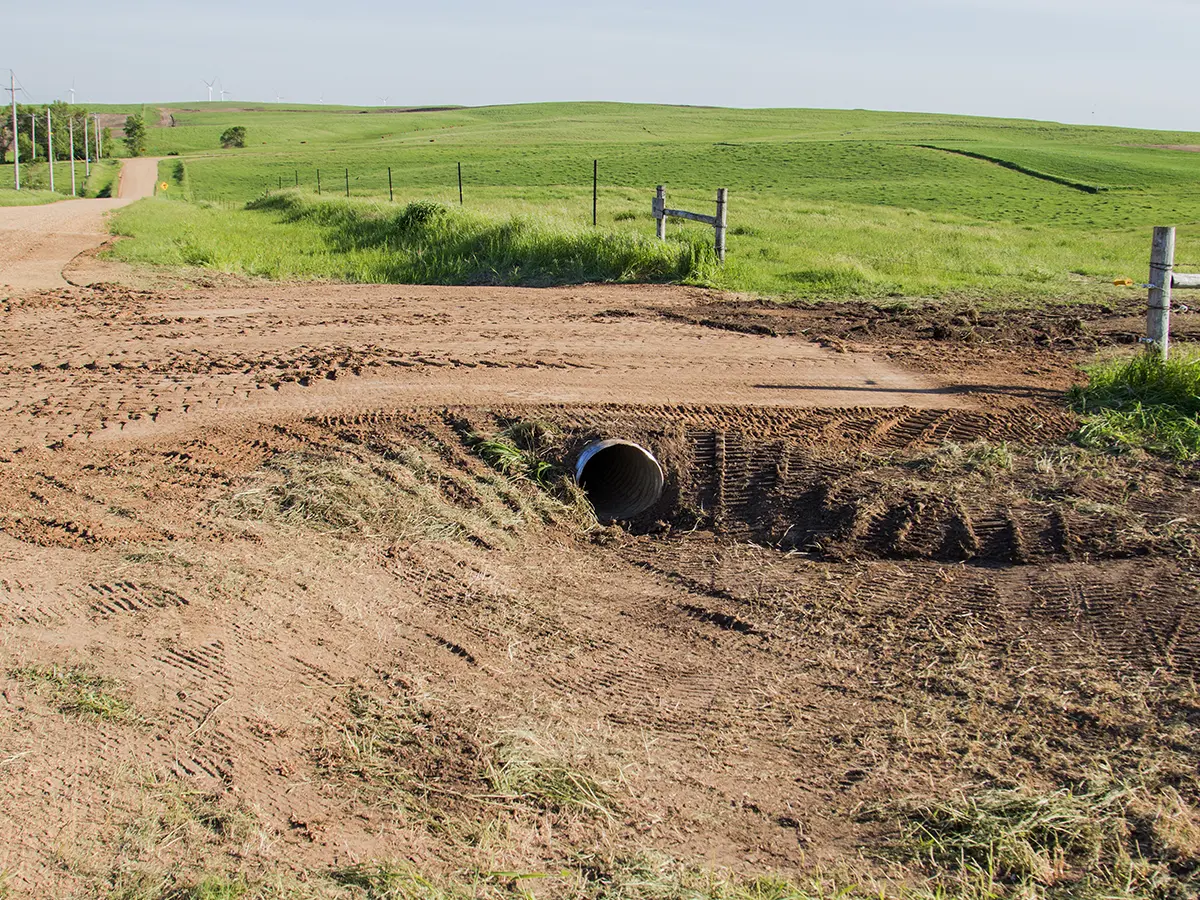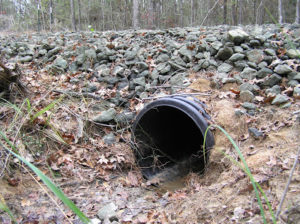Thorough Underbrush Clearing for Land Management
Thorough Underbrush Clearing for Land Management
Blog Article
Culvert Setup Made Easy: Step-by-Step Guide for Success
Setting up culverts may feel like a simple job, but making certain an effective outcome needs careful preparation and execution. From picking the proper culvert size to incorporating correct drainage procedures, each action in the setup process plays an important role in the performance and long life of the culvert system. By following a systematic strategy and taking notice of essential information, the installment can proceed efficiently, minimizing potential problems down the line. Remain tuned to reveal the necessary steps and considerations that can make culvert installment a seamless and successful endeavor.
Choosing the Right Culvert Dimension
Selecting the ideal culvert size is critical for ensuring effective water circulation and architectural integrity in culvert installment projects - Pad Construction. The size of the culvert directly affects the circulation ability of water with the framework. A culvert that is as well tiny can cause flooding and overflow, while one that is too big may result in decreased water rate, potentially triggering debris accumulation and clogs
To figure out the right culvert dimension, elements such as the watershed location, optimal flow rates, and hydraulic efficiency requirement to be thoroughly taken into consideration. Calculations based on these parameters aid in choosing a dimension that can adequately manage the expected water volume while lessening the threat of clogs and structural failing.
It is vital to get in touch with engineering standards and requirements to ensure that the chosen culvert size fulfills the job demands and local policies (Pad Construction). By choosing the ideal culvert dimension, task supervisors can maximize water circulation, stop possible concerns, and boost the total effectiveness and durability of the culvert installment
Preparing the Installment Website
Effective culvert installment requires precise prep work of the setup site to make certain optimum structural support and performance. Prior to starting the setup process, it is vital to clear the website of any kind of debris, greenery, or obstructions that might impede the culvert's positioning. Making certain a level foundation is crucial for the appropriate positioning and stability of the culvert. This may include grading the site to produce a smooth, also surface that can properly support the weight of the culvert and any awaited loads. Additionally, proper compaction of the soil underneath the culvert is needed to stop resolving or shifting gradually.
Furthermore, it is necessary to consider factors such as soil composition, groundwater degrees, and environmental effects when preparing the setup site. Carrying out a thorough site evaluation can help recognize any type of potential challenges or risks that might impact the culvert's efficiency. By putting in the time to prepare the installment website appropriately, you can help assure an effective culvert installment that satisfies architectural requirements and ensures long-lasting performance.
Putting the Culvert Properly

The grade at which the culvert is placed is essential for maintaining an appropriate incline for water circulation. A gradual slope aids stop pooling and promotes effective drainage. Furthermore, the culvert should be oriented correctly to ensure that the inlet and outlet remain in the proper areas. This orientation is crucial for the culvert to operate successfully in handling water circulation.
Backfilling and Condensing the Soil
Appropriate backfilling and compaction of the dirt around the culvert is essential to make sure security and stop possible concerns in the future. Once the culvert is appropriately placed, the next essential action is to backfill the location around it with suitable product. The backfill material ought to be totally free from rocks, particles, and raw material to prevent damage to the culvert. It is recommended to make use of granular material such as sand or gravel for backfilling, as it gives excellent drainage and compaction properties.
After placing the backfill material, it is necessary to portable it in layers of uniform density. Using a compactor or a mechanical meddle, small the soil carefully to avoid harming the culvert. Compaction helps in lowering the opportunities of settlement and guarantees uniform support around the culvert. It is vital to portable the soil uniformly on all Tree removal sides of the culvert to keep its architectural integrity.
Appropriate backfilling and compaction not only offer security to the culvert yet also help in stopping dirt disintegration and keeping the long life of the culvert system.
Ensuring Appropriate Water Drainage Integration
Incorporating effective drain solutions plays a vital duty in the total capability and long life of culvert setups. Proper water drainage combination is important for taking care of water flow, avoiding erosion, and guaranteeing the architectural honesty of the culvert system. To attain this, it is important to create an extensive water drainage strategy that considers elements such as the volume of water anticipated, the topography of the area, and the type of soil present.

Furthermore, including functions like erosion control measures, such as riprap or plant life, can additionally improve the performance of the drainage system. By thoroughly planning and applying these water drainage solutions, culvert installments can work successfully and stand up to the examination of time.
Conclusion
Finally, proper culvert installation is essential for preserving reliable drainage systems. By choosing the right culvert size, preparing the setup website, putting the culvert appropriately, backfilling and condensing the soil, and guaranteeing appropriate drainage integration, success can be attained. Complying with these steps will certainly help guarantee the long life and performance of the culvert, ultimately adding to the overall success of the water drainage system.
Report this page